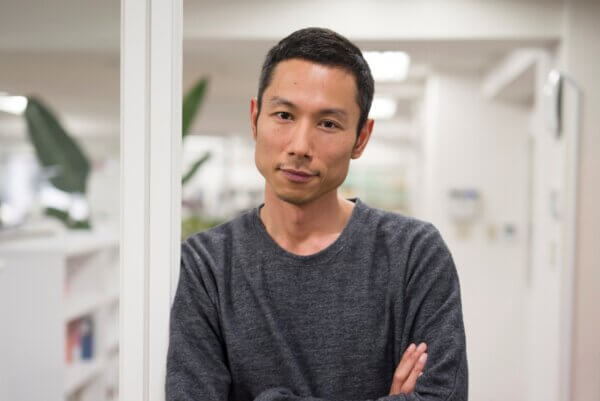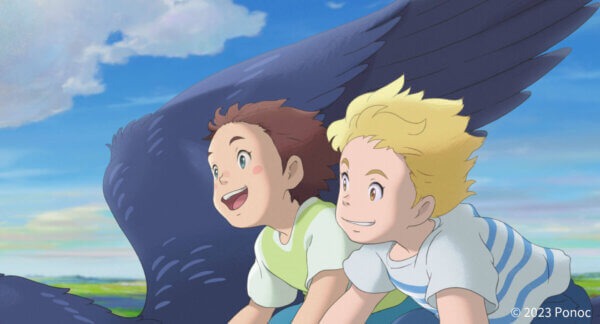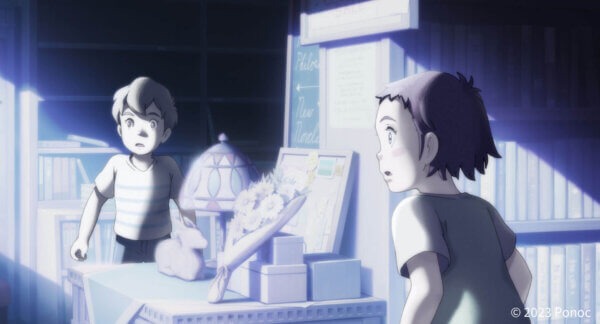The Imaginary | Interview with Yoshiaki Nishimura
Studio Ponoc, formed by Studio Ghibli staff members after the animation house temporarily closed in 2014, is back with their third feature film. The Imaginary dives into a community of imaginary friends, painting their goals, fears and the connections they build to their human companions. The film picks up on Ghibli’s reputation for beautiful visuals with wonderfully rendered nonsensical worlds that could only be dreamt up by a child, or an animator.
Penning the script and working as a producer on the film is Yoshiaki Nishimura. As founder of the studio, Nishimura follows in the footsteps of industry greats like Hayao Miyazaki and Isao Takahata, having absorbed a wealth of lessons from the two during his 10 year stint at Ghibli. During that time, Nishimura accumulated credits on The Tale of the Princess Kaguya, When Marnie Was There and 2023’s The Boy and the Heron.
Skwigly sat down for a chat with Nishimura to discuss the technical achievements of The Imaginary, his philosophy as a producer and trends in the Japanese industry at large.
What made you fall in love with animation?
I struggle to answer that question right away, because I don’t know if I would say I love animation. I love animation as an art form and I do recognise the power in animation, but first and foremost, I love children and I want them to have a good and rich life. I think animation is a tool that would be able to assist them in that. That’s why I went into the animation world, so yes, maybe I do love animation! But I believe two of my maestro’s, Hayao Miyazaki and Isao Takahata probably had a similar mindset. They really believed in animation as a communication tool, a vehicle for stories, so I think it’s the same feeling for me.
The Imaginary is set in the UK, what kinds of research did you do to get the look and feel of the country correct?
We try to be authentic in what we portray and what we capture in animation. The devil is in the details because children as an audience are not very forgiving. If it’s an adult, they would think ‘okay, this is not quite realistic and some details are not correct, but there might be a reason behind it, maybe they didn’t have enough budget’ and they overlook it. Children notice everything so we really wanted to pay attention to every single detail. We did location hunting, it wasn’t possible to travel due to the pandemic, but we had a coordinator based in England who sent videos and photographs for us to use as reference. We also had a consultant who is a UK-based doctor and that person sent footage of British hospitals for us to model on.
What did mixing traditional animation with computer animation enable you to achieve?
For this, we didn’t use that much computer animation, little bits of it were used, for example, in the car scene, but whether we use CG in animation or not depends on the story. So the focus that I would like to encourage the audience to see in the film is not so much the combination of 2D and CG, it’s more about the light and shadow texture within this animation. I would describe the film as hand drawn-hand painted. We have drawn more than 14,000 images and it’s not realistic for us to capture the light and shadow of all the textures in all these drawings. But with the contribution of Poisson Rouge, our French animation studio, we have managed to add more texture in light and shadow, enabling us to add more depth to it.
You were the producer on Isao Takahata’s The Tale of the Princess Kaguya, a long production that had to be delayed. How has that experience affected the way you work with directors? Do you let them loose or give them strict deadlines?
It’s a good question and a difficult topic. Princess Kaguya was an extremely long production, it took eight years, but I don’t think it’s necessarily good or bad whether the production length is long or short. There were challenges [with The Imaginary] because we needed to extend the production period by about a year or so. That posed some challenges both of course budget-wise but also some creators needed to leave the production because they couldn’t stay for that extra length of time. There were a lot of things that we needed to consider. But our ultimate goal is to create something good. As a producer, it’s very important for me to be mindful of different elements, but you need to follow your intuition as well, whether it is necessary to try and retain this concept and the elements in order to create something really good. It’s very difficult to assess and strike that balance.
When establishing Studio Ponoc, what lessons did you learn from Miyazaki, Takahata and Toshio Suzuki?
I was at Studio Ghibli for more than 10 years so there were lots of great things that I learned. Toshio Suzuki is a bit separate because he’s a business person so I’m not going to comment on that side of things. But in regards to Miyazaki and Takahata, definitely, there are lots of great learnings. But one main thing that I would mention is probably this conviction, a strong belief that one film could change someone’s life. They genuinely believe that a film could have a positive influence on somebody’s life going forward, and especially something that they have seen as a child. Those children who were exposed to a great piece of film would become an adult with a better worldview. That’s something I really wanted to take on and is something that, as a studio, we believe in.
Animation from Japan has exploded in popularity in the west over the last decade or so. Have you noticed any shifts in the Japanese industry because of that change? And does it affect the kind of movies that Ponoc wants to make?
It’s great to hear that Japanese animation is highly regarded amongst the world and that there are many more fans, because the industry itself in Japan is very small when you think about it. I know most of the industry personnel, we’re all friends. But one concern that I have is that a lot of the animation that’s created is shifting towards targeting adult audiences rather than children. The number of children in Japan is declining and adults can just spend on whatever they wish. From a business standpoint, it makes sense to create animation for adults but that hinders the opportunity for children to see something great, something that’s newly created. It’s a shame because what we [Ponoc] are trying to do is now seen as non-mainstream, because the mainstream focus has shifted towards adult audiences. But as I’ve explained, we have this conviction to create something great for children, for them to really enjoy and be moved by. We don’t really want to move away from that, no matter how the world will move forward.
The Imaginary is out now on Netflix





